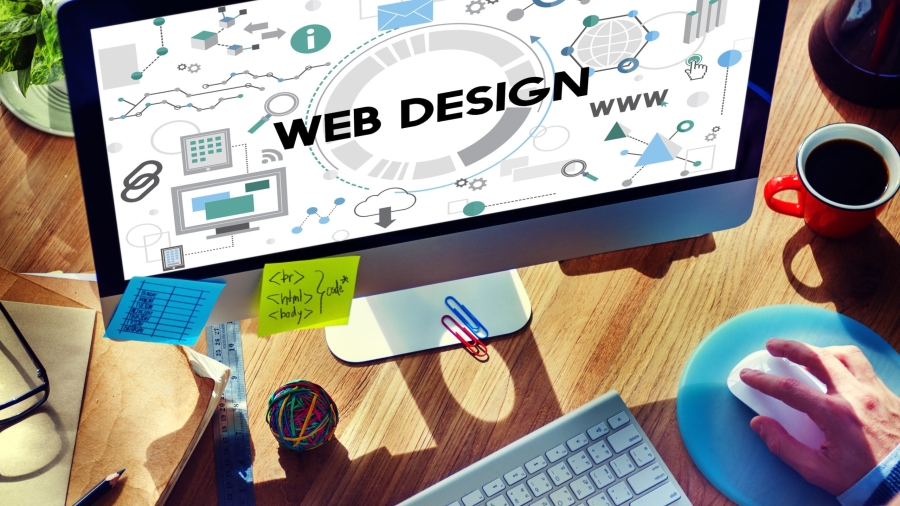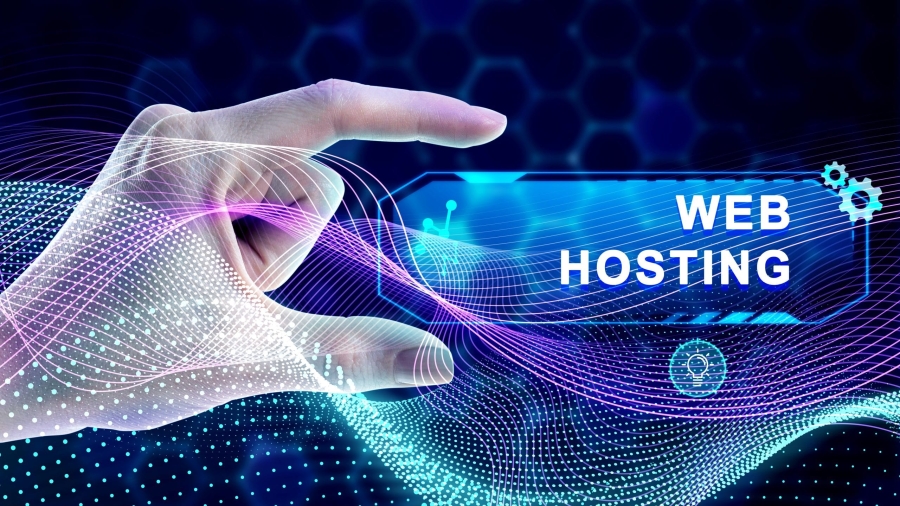Supply chain teams enter 2025 with a different mandate than ever before: build efficiency and resilience at the same time. Margins remain tight, customer expectations keep rising, and disruption—whether from geopolitics, extreme weather, or shifting demand—has become a planning assumption, not an exception. Against this backdrop, intelligent automation technologies have moved from experimental pilots to the operating core of high-performing supply chains. The combination of AI in supply chain management, robotic process automation (RPA), IoT sensors, and digital twins offers a practical path to do more with less while improving service quality.
From isolated tools to an automation strategy
A few years ago, many companies tried single-point fixes: a forecasting model here, a warehouse robot there, an RPA bot for invoices. Useful, but limited. In 2025, leaders treat automation as a coordinated system with three layers:
Sensing & visibility (IoT + data integration): Devices, scanners, telematics, and partner feeds supply real-time signals on inventory, location, temperature, utilization, and exceptions.
Thinking & prediction (AI/ML + digital twins): Advanced analytics and virtual replicas model demand, capacity, and network performance; they forecast outcomes and test scenarios safely before changes go live.
Action & execution (RPA, workflows, robotics, AGVs): Decisions flow into automated tasks—from purchase order creation to slotting, picking, dispatching, carrier booking, and claims processing—reducing delays and human error.
When these layers are stitched together, the result is hyperautomation: end-to-end process optimization that spans planning, sourcing, manufacturing, logistics, and customer service.
Why efficiency and resilience now reinforce each other
Historically, efficiency (lean, low inventory, fewer suppliers) and resilience (buffers, redundancy, multi-sourcing) pulled in opposite directions. Intelligent automation helps reconcile the two:
Granular forecasting → right-sized buffers: Better demand sensing means you can hold protective inventory where it matters, not everywhere.
Real-time monitoring → faster recovery: IoT and control tower visibility shorten time-to-detect and time-to-respond for delays, spoilage, or compliance risks.
Scenario planning → smarter redundancy: Digital twins quantify trade-offs (cost, service, emissions) so multi-sourcing and nearshoring are designed, not improvised.
Workflow automation → consistent execution: RPA reduces latency and manual errors in routine logistics tasks, keeping the plan and the shop-floor aligned.
In other words, supply chain efficiency in 2025 isn’t only about cutting costs; it’s about precision—knowing where to spend, where to save, and how to adapt quickly without chaos.
What “good” looks like: a maturity snapshot
Use this simple maturity lens to assess where you stand and where to invest next:
Level 1 — Task Automation: A handful of RPA bots handle repetitive tasks (e.g., invoice matching). Benefits are local and fragile if upstream data changes.
Level 2 — Functional Intelligence: AI forecasting or WMS optimization improves a specific domain (planning, warehousing), but integration is limited.
Level 3 — Cross-Functional Orchestration: Planning, procurement, manufacturing, and logistics share a unified data layer; exceptions trigger automated, multi-step workflows.
Level 4 — Digital Twin-Driven Enterprise: A living digital twin spans the network; scenarios (promotions, supplier outages, port congestion) are simulated before execution; policies self-tune based on outcomes.
Most organizations straddle Levels 2–3. The leap to Level 4 is achievable with clear data governance and an architecture that treats the digital twin as the decision backbone.
Building the data foundation the right way
Every automation initiative rises or falls on data quality and accessibility. Before scaling AI or RPA, lock down these essentials:
Unified data model: Harmonize product, location, and partner master data. Map ERP, WMS, TMS, and procurement schemas to a common vocabulary.
Event streaming: Connect IoT devices, EDI/JSON partner feeds, and application events into a near-real-time pipeline rather than brittle nightly batches.
Metadata & lineage: Track where data comes from, who owns it, and how it’s transformed; this safeguards trust and speeds compliance reviews.
Security & access control: Role-based access, tokenization of sensitive fields, and strong API gateways maintain control while enabling collaboration.
Treat data like any other asset: catalog it, measure its quality, and assign owners. Only then will your AI in supply chain management produce reliable forecasts and your digital twins behave like the real world.
The digital twin, demystified
A digital twin is more than a network diagram. It’s a living computational model of your supply chain that:
Mirrors nodes (plants, DCs), flows (lanes, lead times), constraints (labor, equipment), and policies (MOQ, safety stock).
Ingests live signals (inventory, transit status, orders, disruptions) to keep assumptions current.
Runs “what if” experiments—supplier failure, capacity expansion, demand spikes—so you can test responses before changing the plan.
Feeds decisions back to execution systems (ERP/WMS/TMS) via automated workflows.
The payoff is twofold: first, better planning quality (because you learn before you act); second, faster operational recovery (because pre-approved playbooks can be triggered automatically when certain conditions occur).
RPA where it truly shines
RPA in logistics is most effective when it removes latency from high-volume, rules-driven work that still touches multiple systems. Ideal candidates include:
Purchase order creation and updates: Bots validate approvals, check vendor terms, and populate ERP fields consistently.
Shipment booking and tendering: Bots compare carrier SLAs and rates, create bookings, and push confirmations to TMS and partners.
Invoice matching and claims: Bots reconcile GRNs, BOLs, and invoices; route exceptions to humans with full context attached.
Master data maintenance: Bots enforce naming standards, flag duplicates, and manage sunset rules.
Don’t automate chaos. Stabilize the process first (standardize inputs, define exception rules), then deploy bots. Well-governed RPA complements—not replaces—human expertise by eliminating the swivel-chair work that slows everyone down.
AI for forecasting that people trust
Forecasts fail when stakeholders don’t believe them. Build trust in AI-driven demand planning by:
Combining signals: Use historical sales, promotions, price changes, weather, macro indicators, and channel trends—not just last year’s numbers.
Segmenting by behavior: Identify SKUs that respond to promotions, seasonality, or price elasticity and apply tailored models.
Explaining drivers: Provide feature importance and scenario views so planners see why the forecast shifted.
Closing the loop: Track forecast error by segment and feed learnings back to improve models and safety stock policies.
The outcome isn’t a “perfect” number; it’s a forecast system that adapts, explains, and improves service while trimming waste.
Architecture: keep it modular, API-first
To scale intelligent automation technologies without lock-in, design for:
Composable services: Keep forecasting, optimization, workflow, and integration components loosely coupled behind APIs.
Event-driven automation: Let real-time events (ETA changes, quality alerts) trigger playbooks automatically—no human polling.
Human-in-the-loop controls: For high-impact decisions, require approval with visibility into assumptions, alternatives, and KPIs.
Observability: Instrument processes with logs, metrics, and traces so you can pinpoint bottlenecks and model drift quickly.
A modular, API-first architecture preserves optionality: you can upgrade one capability (say, your optimizer) without re-wiring the entire stack.
The human factor: operating model and change
Technology enables; people and process deliver. High-performing teams:
Establish a Supply Chain Automation Office that prioritizes use cases, manages the roadmap, and enforces standards.
Pair process owners with data scientists/engineers so solutions reflect real constraints.
Invest in upskilling: planners learn to interpret model outputs; analysts learn to design automations safely.
Celebrate exception handling wins—when the system flags an issue and the team resolves it quickly, make it visible.
Adoption grows when frontline teams see automation remove friction, not add oversight.
Sustainability as a built-in outcome
Efficiency isn’t just financial. With better routing, higher utilization, reduced spoilage, and smarter inventory placement, digital twins and IoT directly support sustainability goals—fewer miles, fewer emergency shipments, less waste. Treat emissions and energy as first-class KPIs in your models so greener choices surface alongside cost and service.
we established why 2025 is the inflection point for intelligent automation and how efficiency now goes hand in hand with resilience. Let’s go deeper into the four cornerstone technologies that are transforming supply chains: AI-powered demand forecasting, RPA for routine tasks, IoT-driven visibility, and digital twins for real-time modeling. Together, these capabilities form the backbone of the modern automated supply chain.
1. AI-Powered Demand Forecasting and Planning
Forecasting is the heartbeat of the supply chain. If demand planning fails, everything downstream—procurement, production, warehousing, distribution—suffers. In 2025, AI in supply chain management has matured into a critical enabler of accuracy, agility, and efficiency.
Why AI beats traditional forecasting
Traditional methods rely heavily on historical averages and simplistic statistical models. They struggle with today’s environment, where demand can shift overnight due to social media trends, inflationary pressures, or geopolitical disruptions.
By contrast, AI-driven forecasting models integrate dozens of data streams:
Historical sales data segmented by SKU, channel, and geography
Market signals like promotions, competitor pricing, and economic indicators
External data such as weather patterns, holiday schedules, or even search engine trends
Real-time transactional data from e-commerce platforms and POS systems
The result is a living forecast that adapts daily or even hourly.
Example: A consumer electronics case
A global electronics brand once faced severe demand swings when influencers hyped or criticized new gadgets. Traditional models underreacted, leading to stockouts or bloated inventory. With AI, the company began integrating social listening data into demand planning. When influencers sparked sudden interest, the AI forecast adjusted within hours, triggering automated supplier orders. Service levels improved, and obsolete stock declined by double digits.
Key KPIs for AI forecasting
Forecast accuracy (MAPE or WAPE): 20–40% improvement compared to legacy models
Inventory turnover: higher turns due to reduced safety stock
Fill rate / OTIF (On-Time In-Full): fewer missed sales due to shortages
Planning cycle time: forecasts updated daily vs. monthly
AI doesn’t replace human planners—it augments them by surfacing patterns too complex for manual models and by providing explainable drivers (why demand went up or down).
2. Automation of Routine Processes with RPA
Where AI helps decide, RPA in logistics helps do. Many supply chains still waste thousands of hours on repetitive, rules-based tasks—copy-pasting from emails into ERP systems, booking shipments manually, or reconciling invoices line by line.
In 2025, RPA bots act as digital clerks, working across ERP, WMS, and TMS systems without fatigue, errors, or breaks.
Common RPA use cases
Procure-to-Pay (P2P): Creating purchase requisitions, verifying approvals, matching invoices against goods receipts.
Order-to-Cash (O2C): Entering sales orders, generating shipping documents, updating delivery statuses, producing invoices.
Logistics execution: Booking carriers, printing labels, updating tracking numbers.
Master data management: Checking duplicates, standardizing codes, applying naming conventions.
Benefits in practice
A logistics provider that deployed RPA bots for freight booking reduced processing time per shipment from 10 minutes to under 1 minute. The bots handled 85% of shipments end-to-end without human involvement, while staff focused on handling exceptions (e.g., hazmat compliance or customer-specific requests). This reduced operating costs and improved customer satisfaction due to faster confirmations.
Key KPIs for RPA
Process cycle time reduction: often 70–90% faster
Error rates: near-zero compared to 3–5% manual error rates
FTE savings: thousands of hours freed for higher-value tasks
Throughput: more orders processed without adding headcount
RPA shines where rules are clear, volumes are high, and data sources are structured. For messy, judgment-heavy processes, RPA works best when paired with AI (e.g., OCR + NLP for reading invoices).
3. Real-Time Monitoring with IoT Devices
Automation is impossible without real-time visibility. That’s where the Internet of Things (IoT) transforms supply chain management. By embedding sensors into trucks, containers, shelves, and production lines, companies can monitor the “live health” of assets and shipments.
Applications of IoT in supply chains
Cold chain logistics: Sensors track temperature and humidity for pharmaceuticals and food. If a threshold is breached, alerts trigger corrective actions.
Fleet management: GPS and telematics provide ETA predictions, fuel efficiency data, and driver safety insights.
Warehouse operations: Smart shelves and RFID tags track stock levels and trigger automatic reorders.
Predictive maintenance: Machines in factories transmit vibration and heat data, predicting breakdowns before they happen.
Example: Pharmaceutical supply chains
In vaccines distribution, IoT sensors monitor temperature from factory to clinic. If a shipment strays outside the acceptable range, the system alerts both the carrier and consignee instantly. This prevents spoiled batches from reaching patients, protecting both lives and brand trust.
Key KPIs for IoT
Spoilage rate reduction: 30–50% lower in cold chains
Inventory accuracy: >95% vs. ~70% with manual counts
On-time delivery rate: improved by real-time ETA updates
Asset utilization: higher due to predictive maintenance
IoT builds the foundation of visibility-driven automation—you can’t optimize what you can’t see.
4. Digital Twins for Simulation and Scenario Planning
If IoT provides visibility into what’s happening, digital twins help simulate what could happen next. A digital twin is a virtual replica of supply chain assets, processes, and networks that runs alongside the real-world system.
Capabilities of digital twins
Scenario simulation: What if a supplier shuts down? What if a port strike delays shipments?
Network optimization: Should we relocate a DC closer to customers? What’s the cost/service/emissions trade-off?
Dynamic routing: Adjust routes in real time based on weather, congestion, or fuel costs.
Sustainability planning: Model carbon emissions impact before implementing changes.
Example: Retail network redesign
A major retailer used a digital twin to evaluate whether to open a new distribution center in Eastern Europe. The twin simulated transportation costs, delivery times, labor availability, and emissions for multiple locations. The chosen site reduced delivery lead time by 30% while lowering emissions by 12%. This data-backed decision won board approval faster and reduced financial risk.
Key KPIs for digital twins
Scenario analysis speed: from weeks of manual spreadsheets to hours or minutes
Service level improvements: 5–15% gains due to proactive adjustments
Cost savings: multimillion-dollar reductions in transportation or inventory
Carbon footprint reduction: measurable, model-driven sustainability
Digital twins also enhance resilience by enabling “digital fire drills.” When disruption hits, companies already know the best backup plan because they’ve simulated it.
How These Technologies Work Together
While each tool—AI, RPA, IoT, digital twins—delivers value individually, the real power emerges when they interconnect:
IoT feeds real-time data → into the digital twin
Digital twin simulates scenarios → recommendations flow to AI-driven planning models
AI updates forecasts and decisions → tasks are executed via RPA bots and robotics
This closed-loop system creates a self-correcting supply chain where disruptions are detected, analyzed, and acted upon—often without human intervention.
So far, we’ve seen how AI forecasting, RPA, IoT, and digital twins provide the backbone of intelligent automation in supply chains. But automation doesn’t stop at screens and data streams. In 2025, the physical movement of goods is also undergoing a radical transformation through autonomous vehicles, robotics, and hyperautomation frameworks. These technologies extend automation from planning and information flows into the physical execution of logistics, unlocking not just efficiency but strategic business advantages.
1. Autonomous Vehicles and Robotics in Supply Chains
Supply chains involve countless repetitive, physical tasks—moving pallets, picking items, transporting goods across long distances. Traditionally, these rely heavily on human labor. But with rising wages, labor shortages, and safety challenges, companies are turning to autonomous vehicles (AVs), automated guided vehicles (AGVs), drones, and warehouse robotics.
Warehouse automation: AGVs and collaborative robots
Automated Guided Vehicles (AGVs): These driverless carts move pallets or totes through warehouses, following optimized routes using sensors, LiDAR, and mapping software. They reduce forklift accidents and increase throughput.
Collaborative robots (“cobots”): These robots work side by side with human workers, assisting with repetitive tasks like picking, packing, or palletizing. Unlike older robots, cobots are equipped with vision and safety sensors to operate safely around people.
Example: A major e-commerce retailer deployed hundreds of AGVs to transport shelves of products directly to human pickers. The result? Pickers walked 60% less, reducing fatigue and increasing order accuracy. Combined with AI-driven slotting (deciding where to store items), throughput increased by 40% without expanding headcount.
Drones for last-mile delivery
Last-mile delivery has always been the most expensive leg of logistics. Drones are beginning to reduce costs for lightweight, high-value items such as medical supplies or urgent e-commerce orders.
Speed advantage: Drones bypass traffic, delivering within minutes rather than hours.
Access advantage: Remote or disaster-affected areas can be reached where trucks cannot.
Example: In Rwanda, drones deliver life-saving blood supplies to rural hospitals in under 30 minutes, compared to several hours by road. The same principle is now being applied in urban settings for pharmaceutical and grocery deliveries.
Autonomous trucks and freight
Long-haul trucking is plagued by driver shortages, fatigue, and regulatory constraints on driving hours. Autonomous trucks—equipped with advanced sensors, AI navigation, and connected infrastructure—offer the promise of continuous, safe, 24/7 operation.
Fuel efficiency: AI algorithms optimize acceleration and braking.
Reduced accidents: Autonomous systems minimize human error, which accounts for ~90% of road accidents.
Higher utilization: Trucks can operate longer hours without rest breaks.
While full adoption is gradual, pilot programs in the U.S., Europe, and China have already shown 10–20% cost savings per mile for autonomous freight runs.
KPIs for autonomous vehicles and robotics
Throughput per hour: More goods moved without extra staff
Labor productivity: Reduced human hours per unit handled
Accident/incident rate: Safer workplaces with fewer injuries
Last-mile delivery cost per package: Lower costs, especially in urban areas
Truck utilization rate: Closer to 24/7 operations with fewer idle hours
Autonomous technologies are no longer futuristic—they’re strategic levers for cost reduction, safety, and speed.
2. Hyperautomation: End-to-End Integration
While robotics and AVs transform physical logistics, the real magic lies in connecting them with AI, RPA, and analytics into one seamless system. This is the essence of hyperautomation: combining multiple automation technologies to optimize entire workflows, not just individual tasks.
What hyperautomation looks like in supply chains
Procurement to delivery: AI forecasts trigger automated purchase orders → RPA bots send orders to suppliers → IoT sensors confirm inbound shipments → AGVs move goods into warehouses → digital twins adjust routing based on demand.
Order fulfillment: Customer orders flow automatically from e-commerce systems → AI allocates stock to the best warehouse → cobots pick and pack → drones deliver → customer receives automated status updates.
Exception handling: If a supplier delay occurs, the digital twin simulates alternatives, AI recommends a new sourcing option, and RPA executes the change—sometimes without human intervention.
Benefits of hyperautomation
Speed: Workflows that took days are compressed into hours or minutes.
Accuracy: Integrated automation reduces handoffs and errors.
Scalability: Processes scale with demand without proportional headcount increases.
Visibility: Real-time dashboards show performance across the supply chain.
Hyperautomation essentially creates a self-driving supply chain—a network that senses, decides, and acts with minimal human touch.
3. Strategic Business Benefits of Intelligent Automation
By 2025, intelligent automation is no longer a “nice to have.” It’s a strategic requirement for competitiveness. Companies that embrace it gain advantages across cost, resilience, customer experience, and sustainability.
3.1 Cost efficiency
Lower labor costs: Automation reduces reliance on manual tasks, especially in warehouses and back offices.
Reduced waste: AI-driven planning minimizes overproduction and spoilage.
Optimized transport: Autonomous trucks and AI routing cut fuel consumption and mileage.
Stat snapshot: Studies show automated supply chains can lower operating costs by 15–30%, depending on industry and adoption scale.
3.2 Resilience against disruptions
Supply chains face continuous shocks: geopolitical tensions, trade wars, pandemics, natural disasters. Intelligent automation helps companies adapt faster:
IoT provides early warning of disruptions.
Digital twins simulate alternative sourcing or routes instantly.
RPA executes contingency plans at scale without delays.
The result is a faster time-to-recover (TTR) when disruption hits.
3.3 Customer experience
Customers in 2025 expect speed, transparency, and reliability. Intelligent automation enables:
Real-time order tracking with IoT data.
Faster fulfillment and delivery with robotics and drones.
Fewer stockouts thanks to AI forecasting.
Customer satisfaction scores rise when automation ensures reliability and responsiveness.
3.4 Sustainability and corporate responsibility
Sustainability is no longer optional—it’s demanded by regulators, investors, and consumers. Automation technologies contribute by:
Reducing emissions via optimized routing and autonomous EV fleets.
Cutting waste in perishable goods supply chains through better monitoring.
Optimizing energy usage in warehouses with smart systems.
Example: A European grocery chain used AI routing and EV trucks to cut CO₂ emissions per delivery by 18%—a major brand differentiator in an eco-conscious market.
4. The Human Role in an Automated Supply Chain
Automation often raises fears of “job losses.” The reality in 2025 is more nuanced. While some repetitive roles decline, new opportunities emerge:
Automation supervisors: Oversee RPA bots, AV fleets, and warehouse robotics.
Data scientists and model trainers: Improve AI forecasts and simulation accuracy.
Exception managers: Handle the 10–15% of cases that automation can’t resolve.
Sustainability analysts: Use digital twin data to align operations with ESG goals.
The shift is from manual execution to decision oversight and value creation.
5. Industry Examples of Intelligent Automation in Action
Automotive manufacturing: AGVs move parts between assembly lines; digital twins simulate production schedules; AI forecasts demand for spare parts.
Pharmaceuticals: IoT sensors ensure regulatory compliance; drones deliver urgent medications; RPA automates regulatory filings.
Retail and e-commerce: AI allocates stock; cobots assist in warehouses; drones and autonomous vans handle last-mile delivery.
Food & beverage: IoT monitors freshness; AI predicts seasonal demand; hyperautomation ensures compliance across suppliers.
These case studies prove automation isn’t hypothetical—it’s already delivering measurable ROI across industries.
6. Key KPIs to Track Business Benefits
Organizations serious about supply chain automation in 2025 track progress with holistic KPIs:
Cost efficiency: logistics cost as % of sales, labor cost per order
Resilience: time-to-detect disruptions, time-to-recover (TTR)
Customer experience: OTIF (on-time in full), Net Promoter Score (NPS), order cycle time
Sustainability: CO₂ per ton-km, spoilage rate, energy usage per unit shipped
By linking automation investments to these KPIs, leaders make the value of transformation clear to executives, boards, and shareholders.
Intelligent Automation and Supply Chain Sustainability
In 2025, sustainability is no longer a “nice-to-have”—it’s a strategic necessity. Global regulations, customer expectations, and corporate social responsibility goals are pushing businesses to create greener, more ethical supply chains. Intelligent automation technologies are uniquely positioned to accelerate this transformation by reducing waste, optimizing energy consumption, and improving resource utilization.
For example, AI-powered analytics can recommend the most fuel-efficient delivery routes, while IoT-enabled sensors can monitor carbon emissions in real time. Robotics and autonomous vehicles reduce reliance on manual labor for energy-intensive tasks, leading to lower overall energy use. Digital twins allow businesses to model the environmental impact of different supply chain strategies before implementation, ensuring decisions align with sustainability targets.
By aligning operational efficiency with environmental responsibility, intelligent automation makes it possible to achieve both profitability and sustainability simultaneously—a balance that was once considered difficult to strike.
Overcoming Challenges in Intelligent Automation Adoption
Despite its potential, integrating intelligent automation into supply chains is not without challenges. Organizations must navigate technical, financial, and cultural obstacles to fully realize the benefits.
High Initial Investment – Deploying AI systems, IoT sensors, robotics, and digital twins requires significant upfront costs. While long-term ROI is strong, small and medium-sized enterprises (SMEs) may struggle to justify the expense without clear business cases.
Integration Complexity – Supply chains are global and often involve multiple legacy systems. Ensuring seamless interoperability between old and new technologies is a common hurdle. APIs, middleware, and cloud-based integration platforms are helping, but the process remains resource-intensive.
Cybersecurity Risks – The more connected supply chains become, the more vulnerable they are to cyberattacks. Protecting sensitive data and ensuring secure communication between IoT devices and AI platforms is critical.
Workforce Resistance – Employees may perceive automation as a threat to their jobs, leading to resistance. Companies must adopt change management strategies that emphasize how automation enhances human work rather than replaces it. Training programs and re-skilling initiatives are vital to support this cultural shift.
Scalability Concerns – While pilot projects may succeed, scaling intelligent automation across the entire supply chain can reveal unforeseen bottlenecks. Organizations must adopt a phased approach, beginning with high-impact areas before expanding gradually.
The Future Outlook: Supply Chains in 2030 and Beyond
Looking ahead, supply chains will become even more intelligent, autonomous, and interconnected. By 2030, we can expect:
AI-Driven Autonomous Supply Chains – Minimal human intervention as AI and robotics handle procurement, manufacturing, and distribution end-to-end.
Blockchain Integration – Immutable, transparent supply chain records to enhance trust, reduce fraud, and streamline compliance.
Circular Economy Models – Automation technologies supporting recycling, re-manufacturing, and closed-loop supply chains to minimize waste.
Collaborative Robotics (Cobots) – Human workers collaborating with smart robots to balance efficiency with flexibility.
Global Standardization – As more industries adopt automation, universal standards for IoT communication, data sharing, and robotics operation will emerge, making integration smoother.
This future paints a picture of supply chains that are not only faster and more resilient but also smarter, greener, and more customer-centric. Companies that embrace intelligent automation now will be well-positioned to lead in this evolving landscape.
Conclusion: Why Intelligent Automation Is a Strategic Imperative in 2025
As we close this exploration, one fact stands clear: intelligent automation is no longer optional in supply chain management—it is a competitive necessity.
Businesses that invest in AI, RPA, IoT, robotics, and hyperautomation are not just optimizing operations; they are future-proofing their organizations against global disruptions, rising customer demands, and sustainability challenges. The journey may involve obstacles—from upfront costs to cultural resistance—but the long-term gains in efficiency, resilience, and environmental impact far outweigh the hurdles.
In 2025 and beyond, the supply chain leaders who succeed will be those who recognize automation not as a replacement for human ingenuity but as an enabler of it. By blending human intelligence with machine precision, businesses can unlock new levels of agility, innovation, and customer satisfaction.
The future of supply chains is intelligent, automated, and sustainable—and it’s already here.










